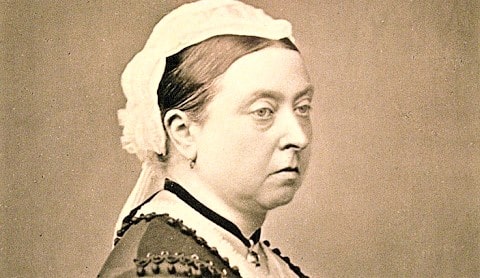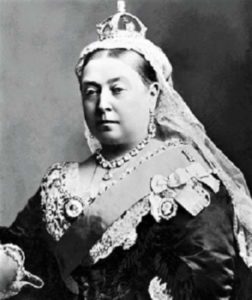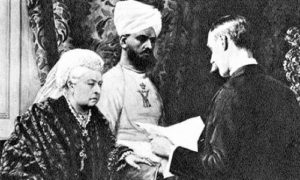Queen Victoria is also known as Victoria I was born on May 24, 1819, at Kensington Palace, London. Victoria was Queen of the United Kingdom of Great Britain and Ireland from 1837 to 1901 and Empress of India (1876-1901). She was the daughter of Prince Edward, Duke of Kent and Strathearn, and Princess Victoria of Saxe-Coburg-Saalfeld.
With the accession of Victoria on June 20, 1837, ended because of the Kingdom of Hanover in force Salic Law, the women from the throne excluded, that has existed since 1714 personal union between Britain and Hanover.
During the following 63 years of Victoria’s reign, the British Empire reached the peak of its political and economic power, the upper and middle classes experienced an unprecedented economic heyday (Victorian era).
The influence of her husband Albert von Sachsen-Coburg and Gotha was decisive for their reign as well as her almost complete withdrawal from the public after his death in 1861. Overall, Victoria interpreted her role as a constitutional monarch very willfully and quite confidently.
With a total reign of 63 years, seven months and two days, Queen Victoria was the longest-reigning British monarch before being surpassed by Elizabeth II on September 9, 2015.
Because of her numerous descendants, she received the nickname “Grandmother of Europe”; for example, she is both the great-great-grandmother of the current Queen Elizabeth II and her husband Prince Consort Philip, Duke of Edinburgh.
The death of Victoria ended the rule of the House of Hanover, which passed to the House of Saxe-Coburg and Gotha when her eldest son Edward VII took over the throne (renamed in 1917 to House Windsor).
Early Life of Queen Victoria
Victoria’s father was Prince Edward Augustus of Kent and Strathearn, the fourth son of King George III. Until 1817, Edward’s niece, Princess Charlotte Augusta of Wales was the only legitimate granddaughter of George III.
His death in 1817 brought about a succession crisis in the United Kingdom and the Duke of Kent and his single brothers were invited to marry and have children. In 1818 the Duke married Princess Victoria of Saxe-Coburg-Saalfeld, a German princess whose brother Leopold was the widower of Princess Charlotte Augusta.
They had one child, Victoria, born at 4 am 15 May 24, 1819, at Kensington Palace in London. The Duchess of Kent already had two children from her first marriage to Emich Carl, 2nd Prince of Leiningen (1763-1814): Charles, Prince of Leiningen (1804-1856), and Princess Feodora of Leiningen (1807-1872).
Later in her life, Queen Victoria maintained close contact with her half-sister. Princess Alexandrina Victoria was baptized in private by the Archbishop of Canterbury, Charles Manners-Sutton, on June 24, 1819, in the Cupola Room of Kensington Palace.
She has baptized Alexandrina after one of its sponsors, Emperor Alexander Ist and Victoria after her mother. Other names proposed by his parents, Georgina (or Georgiana), Charlotte and Augusta, were abandoned on the instructions of the duke’s older brother, the prince regent (future George IV).
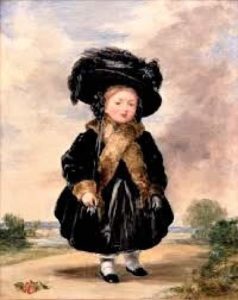
At birth, Victoria is in fifth place in the order of succession to the British throne behind her father and three older brothers: the Prince Regent, the Duke of York and the Duke of Clarence (future William IV).
The Prince Regent and the Duke of York are separated from their wives and are of advanced age so it is unlikely that they will have other children. The Dukes of Kent and Clarence married the same day a year before the birth of Victoria, but the two daughters of the Duke of Clarence (born 1819 and 1820 respectively) died in infancy.
Victoria’s grandfather and father died in 1820 less than a week apart and the Duke of York died in 1827. When his uncle George IV died in 1830, presumptive heiress of his last living uncle, William IV.
The Regency Act (in) 1830 load the Duchess of Kent to ensure the regency in case William IV died before Victoria had 18 years. The king did not trust in the duchess’ ability to play the role of regent and in 1836, he said in his presence that he wants to live up to the 18th Victoria birthday to avoid regency.
The Early Reign of Queen Victoria
On May 24, 1837, Victoria reached the age of 18, which meant that her reign was no longer necessary. Four weeks later, Victoria was awakened by her mother. Victoria should have understood that king IV.
At the age of 71, William died of heart failure on the 20th of June 1837 at 12 o’clock the previous morning. I was awakened by my mother at 6 o’clock in the Victoria diary, she told me that Canterbury archbishop and lord Conyngham are here and want to meet.
I got out of bed and went to the living room (I was only in my night), and I saw them. Conyngham then told me that my uncle was no longer, that he died at 2 o’clock this morning. And as a result, he wrote that I was the Queen.
Victoria was now the Queen of the United Kingdom.
Under the Salic Law in Hanover, no woman could be an heir to the throne. So the crown of Hanover was going to the Duke of Victoria’s uncle Cumberland and Teviotdale, and he became the king of Hanover, Ernest Augustus.
During her life, Victoria remained the duchess of Hanover princess, Brunswick, and Lunenburg. Because the young queen was not yet married and was childless. Ernest Augustus assumed heir to the United Kingdom until his first child was born in 1840.
When the queen rose to the crown, the government was controlled by the wing party. Except for a small chapter in 1830. Wing prime minister Lord Melbourne has become a powerful influence in the life of the queen who has no political experience.
But the Melbourne ministry would not remain strong for a long time. It was growing unpopularly, moreover, England faced considerable difficulties in colonies. In Canada, the UK faced the uprising (the 1837 uprising lasted until 1839). In Jamaica, the colonial legislature was protesting UK policy, with no legislation passed by parliament. In 1839, Lord Melbourne resigned.
Marriage to Prince Albert
On February 10, 1840, Queen Victoria married. It was a union foreseen for many years before and determined by the political interests of England. Prince Albert of Saxony-Coburg-Gotha, German and Victoria’s cousin, was one of the very few young men the sovereign adolescent had ever dealt with and certainly the first with whom he was allowed to converse alone.
When she became her husband, neither the predetermination nor the fear of change that the wedding entailed prevented a feeling of authentic veneration towards that man, not only handsome, exquisite and attentive, but also endowed with a fine political intelligence.
Alberto did not stop having his difficulties at first either. On the one hand, he was slow to get used to the position that the parliament, the prince consort, had drawn up for him beforehand, a status that acquired from him (in Great Britain and Europe) its specific dimensions.
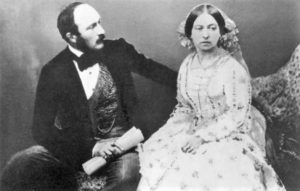
On the other hand, it took even longer for him to forgive certain maladjustment to the ways and manners of the English aristocracy, bypassing his innate shyness with the classic resource of official stubbornness and haughtiness of treatment.
But with the prince’s tact and perseverance, and the natural liveliness and common sense of Victoria, the royal couple cleared all obstacles in the same will and earned universal respect for their initiatives. His was a happy, placid, and homely love, from which four sons and five daughters were born; First World War.
The day came when Victoria was designated “the grandmother of Europe.”
Albert was a perfect husband for Queen Victoria and replaced Lord Melbourne in the role of adviser, protector, and factotum in the field of politics. And she carried out her mission with such success that the sovereign, still inexperienced and in need of that support, experienced no panic when in 1841 the once hated Peel finally replaced Melbourne at the helm of the cabinet.
From that moment on, Victoria discovered that Tory politicians were not only not terrible monsters, but because of their conservatism, they were much closer than the Whigs to their mood and beliefs.
Henceforth, both she and her husband showed a strong predilection for the conservatives, being frequent their controversies with the liberal cabinets headed by Lord Russell and Lord Palmerston.
Prince Albert’s political ability and the queen’s scrupulous respect for parliamentary mechanisms, on many occasions contrary to her own preferences, contributed greatly to restoring the prestige of the crown, seriously undermined since the last years of George III because of of the manifest incompetence of the sovereigns.

